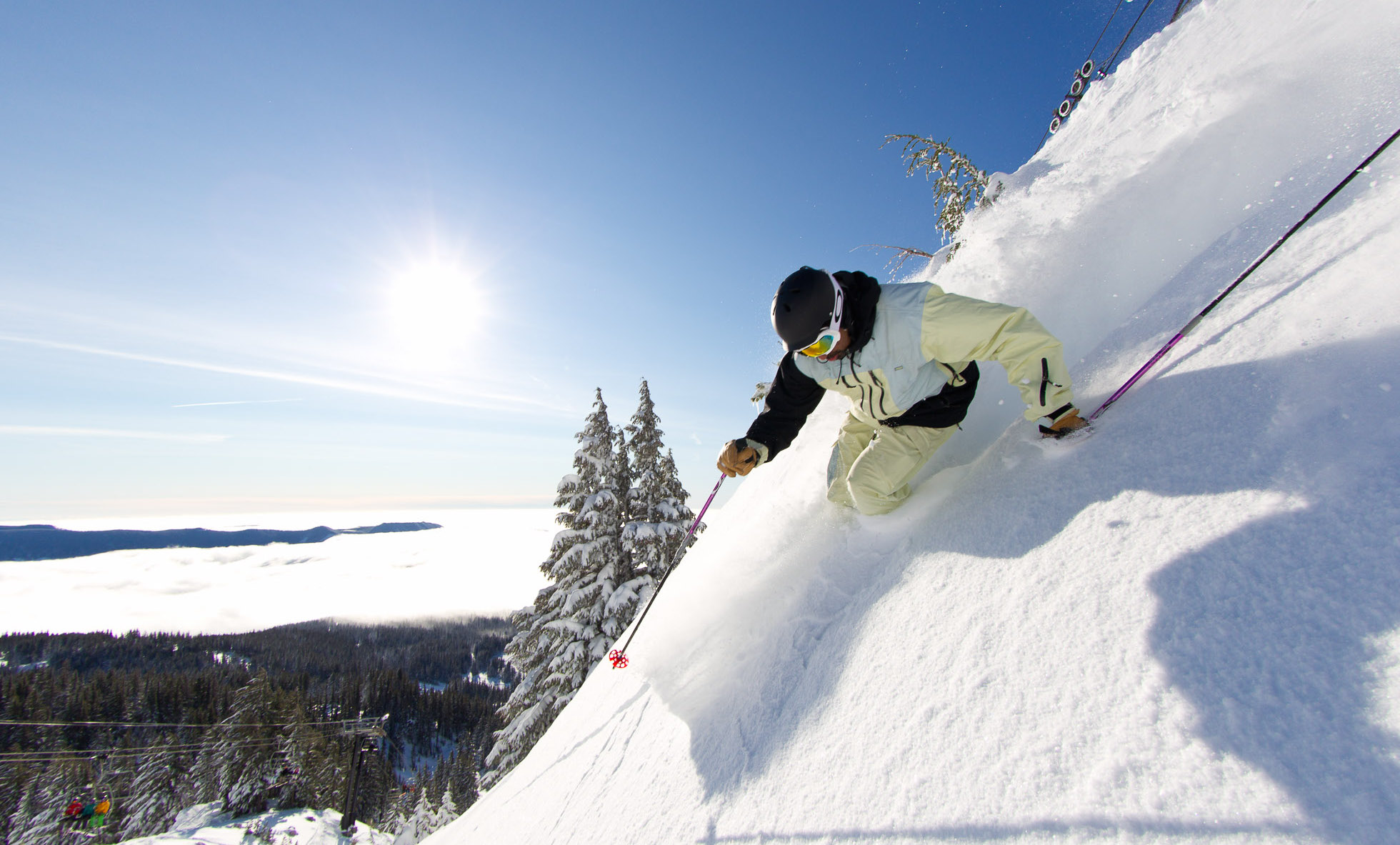It is always hard to watch videos of great athletes suffering injuries that could end their careers.
But it is worth watching these videos of Lindsey Vonn and Sammy Carlson injuring their knees, keeping in mind that both Vonn and Carlson have recovered powerfully and are back out there, skiing with the fearlessness that makes them so exceptional.
Here is the frightening clip of how Lindsey Vonn first blew out her knee during a World Cup race in Austria in Feb. 2013 (she re-injured the same knee in Nov. 2013 and had to miss the 2014 Winter Olympics):
Here is how Oregon-born-and-raised Sammy Carlson blew out his ACL in Jan. 2012 at the Winter X Games Big Air Competition — and how he bounced back from that injury:
“As soon as I landed my knee just gave out, gave out completely,” said Carlson. “I just felt it bend the wrong way, instantly thinking ‘Get me out of here!”
The footage of his post injury workouts give you a powerful sense of how hard Carlson wanted to get back on the slopes shredding. So do his comments about his mental approach toward rehabilitation:
I just told myself ‘Listen to the doctors. List to the physical therapists. Do exactly what they say, so when I come back I’m gonna be stronger than ever, riding harder than ever.’ I don’t want to ride with a brace, just come back, be 100 percent, be back out there skiing again. Keep going to the gym, keep doing my work-outs. Every day I was feeling better and better.
Lindsey Vonn approached her training with a similarly determined attitude, and she recently bounced back from the two devastating knee injuries that forced her to miss the 2014 Winter Olympics in Russia to win a slew of World Cup races and become the most successful female skier in World Cup history.
The short film about vonn’s recovery, The Climb, from Red Bull Media House, shows just how hard Vonn had to work to fight her way back to the top — and how good it felt to win again.
Carlson doesn’t compete in freeskiing any more, but his Sammy C. Project work with filmmaker Drew Lederer and Teton Gravity Research show that he is back on top as one of the best skiers on the planet.
But the recovery stories of Sammy Carlson and Lindsey Vonn aren’t just feel-good entertainment. They are vivid reminders of just how hard everybody needs to work to recover from injury and get back into action. Whether you are a 70 mph, triple-cork athlete or an occasional weekend skier, you are the one in charge of your rehabilitation.
“What we do is the first step,” says Jeffreys Albright, M.D., an orthopedic surgeon with Advantage Orthopedic and Sports Medicine Clinic in Gresham Oregon. “What patients do along with a therapist and trainer is what really allows them to return and achieve their goals.”
Albright says knee surgeries follow procedures that are well established and tested. “There have been incremental changes in technology that have improved results, but ACL reconstruction and meniscus repair are done pretty much the same way that we’ve always done them,” he says. “There have been some advances that have turned out not to work as well, so we have come back to some of the ways we were doing things 15, 20 years ago.
“There is more of an appreciation for moderating new technology, using it where it’s a benefit but realizing that not every advance has really advanced things.”
The same tried-and-true approach also applies to rehabilitation. The new-fangled stuff is not necessarily the best; in fact it probably isn’t. Here are some basic principles for getting the most out of your knee rehab, from the American Academy of Orthopaedic Surgeons:
- Be strong. Exercises to strengthen the quadriceps, hamstrings, abductors (outer thigh) adductors (inner thighs) and glutes will reduce the shock to your knees as you work your way back into action.
- Be flexible. After warming up your muscles, stretch them, to restore range of motion and keep your muscles loose.
- Stick with it. Once you have developed a rehab program with your doctor and your physical therapist, do the exercies tyhree times a week for 4-6 weeks.
- Pay attention to your pain. Pain is your body telling you something. If it hurts, stop the exercise, and talk to your doctor or therapist to figure out how to adapt your workout so you aren’t doing any damage.
The best rehab plans entail a variety of exercises, including stretches, squats, leg curls, extensions, leg presses and more. You’ll want to work with your therapist to design the right program for you, but it could be helpful to study this suggested workout from the American Academy of Orthopaedic Surgeons.
And yes, that same knee rehab workout also doubles as an excellent knee injury prevention workout. The best way to avoid injury in the first place is to get in shape before you hit the slopes.
Take care of those knees, people, and good luck with your rehab if you get hurt!
Last modified: March 2, 2015



